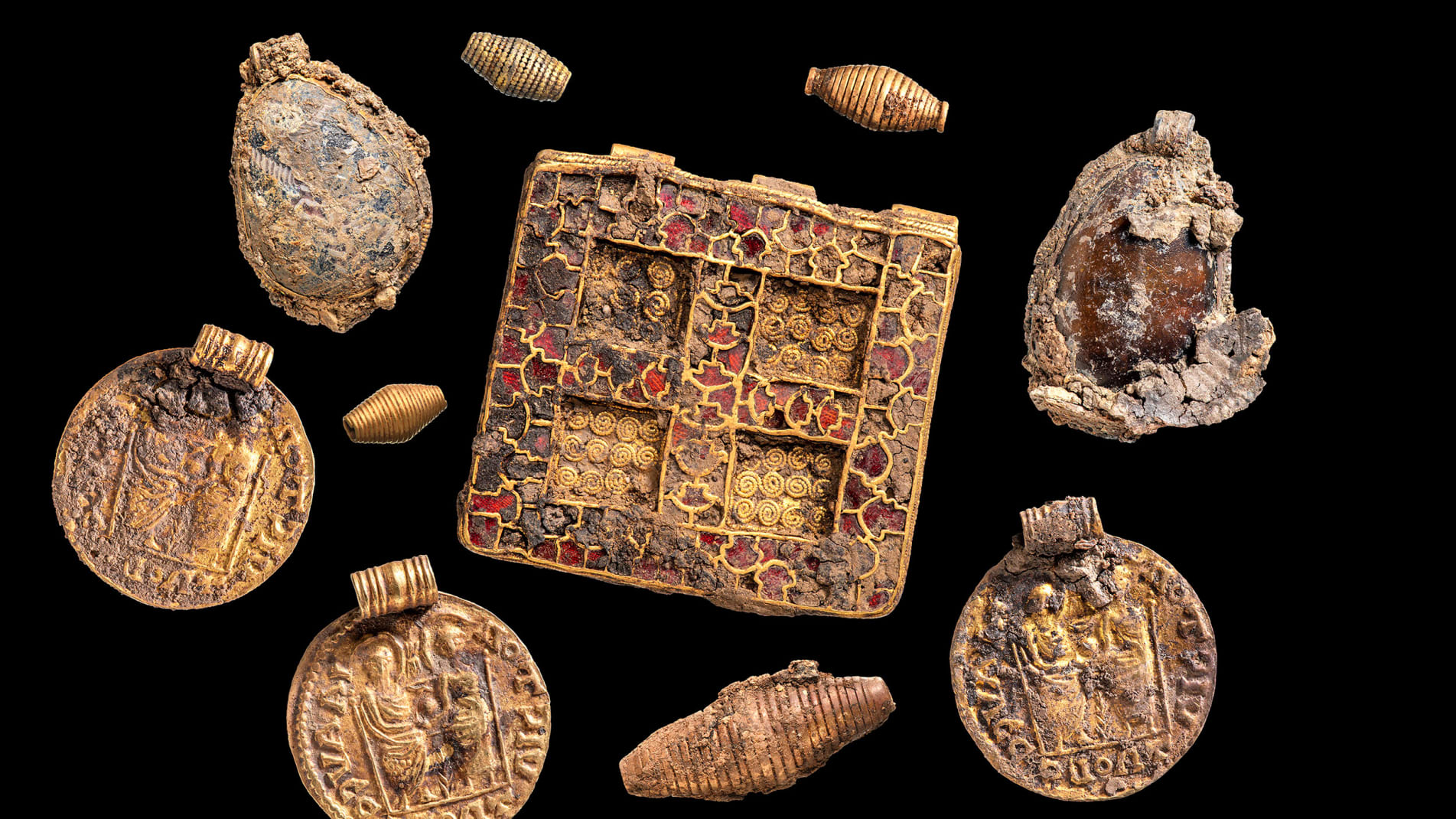Archaeologists have discovered a stunning 1,300-year-old necklace, made of gold, garnets and other semiprecious stones, at an excavation site in central England earmarked for a housing development.
The necklace and other precious objects, called the Harpole Treasure after the local parish in Northamptonshire county where they were unearthed in April, also revealed a powerful role played by some women in Anglo-Saxon England.
The jewelry piece was buried with a woman of high status, who died between 630 AD and 670 AD, according to researchers at the Museum of London Archaeology who unearthed the treasure. The trove also included a relatively large silver cross, two decorated pots and a shallow copper dish.
The Anglo-Saxon bling suggested the woman was powerful in her own right and extremely devout, perhaps an early Christian leader, a princess or an abbess.
The grave site is thought to be the most significant burial from a unique sliver of English history when pagan and Christian beliefs intermingled and women held powerful positions in the early church.
The discovery’s importance, the archaeologists said, was of a similar magnitude to that of other monumental Anglo-Saxon treasures unearthed in England, such as Basil Brown’s famed find in 1939 at Sutton Hoo, where a warrior king was buried in a ship, and the Staffordshire Hoard of gold and silver artifacts, discovered in 2009 by an amateur metal detectorist in a field in Staffordshire, England.
About a dozen other high-status female burials, known as bed burials, have been discovered elsewhere in England. In some cases, the grave sites included similar necklaces.
Few of these burial sites date back earlier than the 7th century AD, when burials of high-status men were more common, and as Christianity took root, later graves rarely featured valuable objects because being buried with ornate jewelry, such as the necklace, was frowned upon by the early Christian Church, said Lyn Blackmore, a senior finds specialist at MOLA.
“The Harpole Treasure, it’s not the richest (bed burial) in terms of the number of artifacts but it is the richest in terms of investment of wealth … and it has the highest amount of gold and religious symbolism,” she said at a news briefing.
X-rays taken of blocks of soil removed from the grave site revealed an ornately decorated but delicate cross cast in silver and mounted on wood. The artifact also had unusual depictions of human faces cast in silver.
Organic matter found in the grave is thought to contain fragments of feathers and textiles like leather, and further study should uncover the nature of the bed burial and whether it had a cover or canopy. The two pots were Frankish in style, Blackmore said, suggesting they came from what is now France or Belgium. The archaeologists hope molecular analysis will allow them to identify the residue in the pots; to date, their analysis has ruled out myrrh.
The skeleton itself was fully decomposed, with the exception of tiny fragments of tooth enamel, but the necklace and other features of the burial convinced the archaeologists that its occupant was female, Blackmore said.












